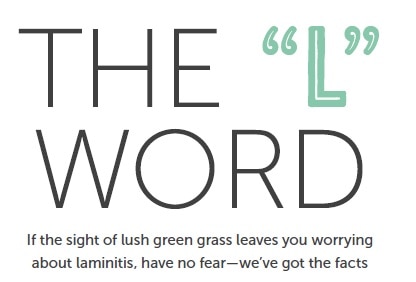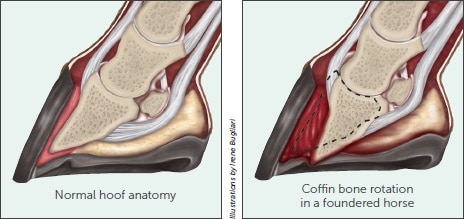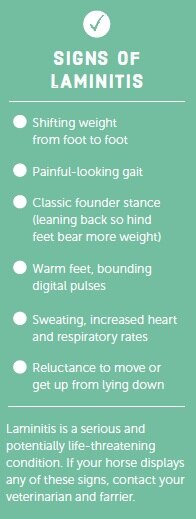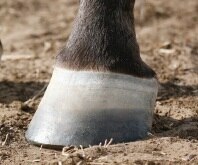Causes and Signs of Laminitis in Horses



Laminae lowdown
The term “laminitis” is used to describe an inflammation of the laminae, the tissue that connects your horse’s coffin bone to the rest of the hoof. This inflammation can be extremely painful, and in severe cases it can cause the laminae to die, leaving the coffin bone unsupported in the hoof. If the bone rotates or sinks in the hoof, the horse is said to have “foundered.” Because of the potential severity, this condition always requires attention from your veterinarian and farrier.
Common causes
The leading cause of laminitis is widely believed to be pasture (grass sugar) overload, which is one of the reasons it’s best to reintroduce grazing slowly in the springtime. You may also consider using a grazing muzzle to help reduce your horse’s risk of overindulging on pasture.
The Tough 1 Easy Breathe Grazing Muzzle offers a comfortable way to limit access to grass without restricting breathing or drinking. There are other causes for laminitis—including inflammatory conditions like Equine Metabolic Syndrome and Cushing’s disease—so it’s important to be familiar with the signs listed above. To learn more about laminitis, visit SmartPak.com/LaminitisVideo


SmartLamina™ Pellets help support the integrity of your horse’s laminae from the inside. This comprehensive formula contains hops and omega 3 fatty acids, demonstrated by research to support healthy laminae, along with MSM and devil’s claw, which help maintain a healthy inflammatory response. Rounding out this comprehensive formula is Auradagex™, a powerful antioxidant to promote cellular health.